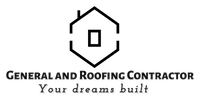Stay Ahead with the Latest Trends in Commercial Roofing
- danielmartin415
- Jul 18
- 3 min read
In the world of commercial roofing, staying updated with the latest trends is crucial. The roofing industry is constantly evolving, driven by advancements in technology, sustainability, and design. Whether you are a business owner, a contractor, or an architect, understanding these trends can help you make informed decisions. This blog post will explore the latest trends in commercial roofing, providing insights and practical information to keep you ahead of the curve.
The Shift Towards Sustainability
Sustainability is no longer just a buzzword; it is a necessity in the commercial roofing sector. Many businesses are now prioritizing eco-friendly materials and practices. This shift is driven by both consumer demand and regulatory requirements.
Green Roofing Systems
One of the most significant trends is the rise of green roofing systems. These roofs are designed to support vegetation, which can help reduce energy costs and improve air quality. Green roofs also provide insulation, reducing the need for heating and cooling.
Cool Roofing Materials
Another sustainable option is cool roofing materials. These materials reflect more sunlight and absorb less heat than traditional roofing. This can lead to lower energy bills and a more comfortable indoor environment. Many businesses are opting for cool roofs to meet energy efficiency standards and reduce their carbon footprint.
Technological Advancements
Technology is transforming the roofing industry. From installation to maintenance, new tools and techniques are making roofing projects more efficient and effective.
Drones for Inspections
Drones are becoming increasingly popular for roof inspections. They provide a safe and efficient way to assess the condition of a roof without the need for scaffolding or ladders. Drones can capture high-resolution images and videos, allowing for detailed inspections and quicker decision-making.
Building Information Modeling (BIM)
Building Information Modeling (BIM) is another technological advancement that is changing the way roofs are designed and constructed. BIM allows for 3D modeling of roofing systems, enabling better collaboration among architects, contractors, and clients. This technology helps identify potential issues before construction begins, saving time and money.
Innovative Materials
The materials used in commercial roofing are also evolving. New products are being developed to enhance durability, energy efficiency, and aesthetics.
TPO and PVC Membranes
Thermoplastic Olefin (TPO) and Polyvinyl Chloride (PVC) membranes are gaining popularity due to their durability and energy efficiency. These materials are resistant to UV rays, chemicals, and punctures, making them ideal for commercial roofs. They also reflect sunlight, helping to keep buildings cooler.
Metal Roofing
Metal roofing is another trend that is on the rise. It is known for its longevity and low maintenance requirements. Metal roofs can withstand harsh weather conditions and are available in various styles and colors, making them a versatile choice for commercial buildings.
Design Trends
Aesthetics play a significant role in commercial roofing. Businesses are increasingly looking for roofing solutions that not only perform well but also enhance the overall appearance of their buildings.
Architectural Shingles
Architectural shingles are becoming a popular choice for commercial roofs. These shingles offer a more textured and dimensional look compared to traditional asphalt shingles. They are available in various colors and styles, allowing businesses to create a unique and appealing roof design.
Integrated Solar Panels
Integrating solar panels into roofing systems is another design trend. This approach allows businesses to generate renewable energy while maintaining a sleek and modern appearance. Solar roofs can significantly reduce energy costs and contribute to sustainability goals.
The Importance of Regular Maintenance
As trends evolve, so does the importance of regular roof maintenance. Keeping up with maintenance can extend the life of a roof and prevent costly repairs.
Scheduled Inspections
Regular inspections are essential for identifying potential issues before they become major problems. Scheduling inspections at least twice a year can help catch leaks, damage, or wear and tear early on.
Preventative Maintenance Programs
Many roofing companies now offer preventative maintenance programs. These programs include regular inspections, cleaning, and minor repairs. Investing in a maintenance program can save businesses money in the long run by avoiding major repairs and extending the life of the roof.
Conclusion: Embrace the Future of Commercial Roofing
Staying ahead in the commercial roofing industry requires an understanding of the latest trends. From sustainability to technology and design, these trends are shaping the future of roofing. By embracing these changes, businesses can improve their roofs' performance, aesthetics, and sustainability.
As you consider your roofing options, keep these trends in mind. Whether you are looking to install a new roof or maintain an existing one, staying informed will help you make the best decisions for your business. The future of commercial roofing is bright, and those who adapt will reap the benefits.






Comments